Eight decorating ideas to steal from the UK’s poshest showhome
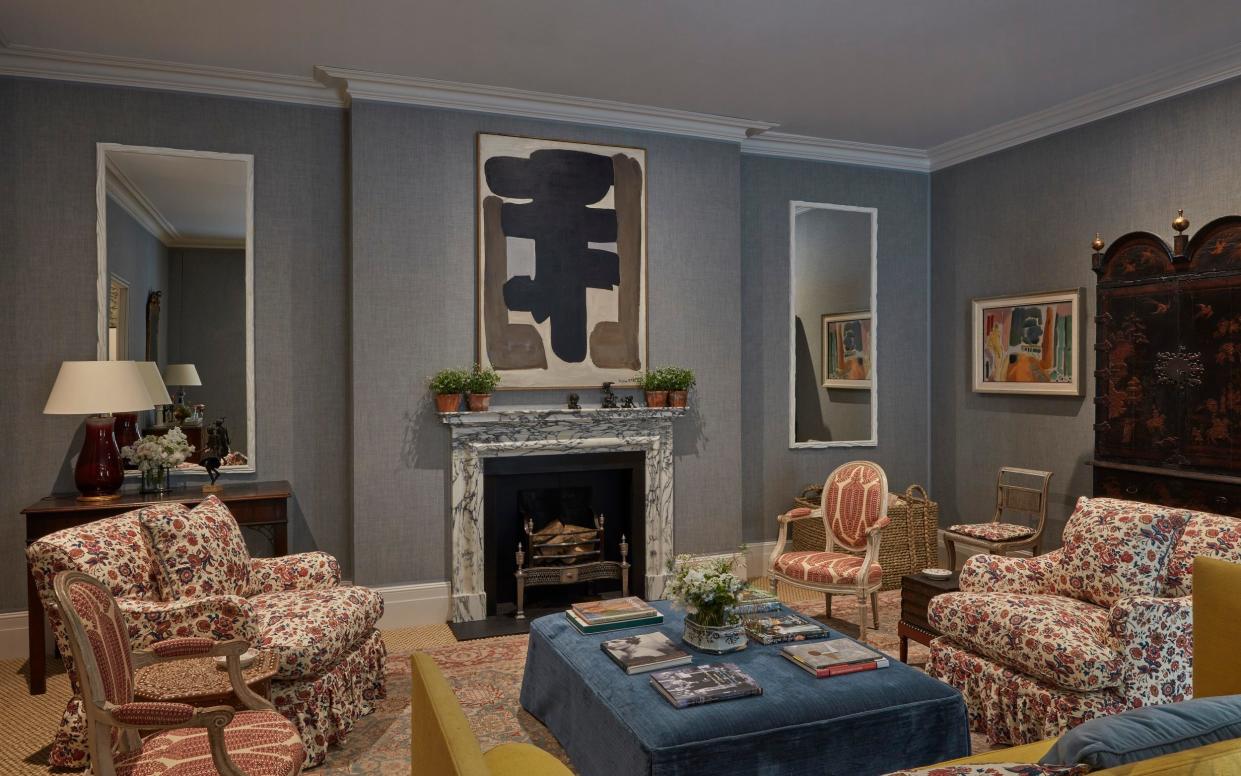
For most of us, it’s rare to get the opportunity to see at first hand the work of a top interior designer. So the WOW!house showcase at Design Centre Chelsea Harbour, which offers just that opportunity, is a hub of inspiration and ideas.
Based on the concept of the decorator showcase that has been a fixture of the American design scene for many years, it takes the form of 18 full-size rooms, from bathrooms and bedrooms through to kitchens, living rooms and dining rooms, each of which has been created by a different interior designer.
This year’s roster of names includes Nicky Haslam, Natalia Miyar, Tim Gosling and Maddux Creative, each of whom has been given carte blanche to design a room scheme free from the restraints of a client’s taste (and budget) – and while the look is undoubtedly high end, there are plenty of tricks and ideas on show to try out at home. Here’s what we learned:
1. High style doesn’t have to cost a fortune
Elevating inexpensive materials is a recurring theme – in the Legend Room decorated by Nicky Haslam and Colette van den Thillart, the expensive-looking flooring that resembles a dark tropical wood is, in fact, plywood, scorched with a blowtorch to darken the colour and bring out the grain – an inexpensive trick that has a very chic effect.

In the elegant drawing room, designer Vanessa Macdonald has taken on the English country house decorating tradition of using every scrap of leftover fabric: the Soane floral linen used for the armchairs and curtains also covers the seat pad on a side chair and scatter cushions on the sofa; the recurring pattern bringing cohesion to the room (a trick that could be emulated with a less luxurious fabric).
2. Every room looks better with a stripe
Macdonald’s room also demonstrated the power of the stripe – here, in the form of a blind that contrasted perfectly with the aforementioned floral curtains. Next door, in a salon lined with faux-library wallpaper, monochrome stripes covering a matching armchair and curtain brought energy to the room.

A slim, striped wallpaper border was used to highly decorative effect here, in criss-cross formation on the ceiling and walls – not an easy look to live with, but a simpler application of a similar striped border, around a door frame or below the cornice of a room, for example, would add a less dramatic dash of pattern. And on the terrace, by yacht designers Studio Winch, a canopy with bright yellow and white stripes would bring sunshine to the gloomiest day.
3. Panelling is a shortcut to texture and gravitas
Several rooms proved that panelling instantly brings a more decorated look to an otherwise plain wall – and it’s another technique that can be done inexpensively with simple wooden mouldings or MDF strips cut to size.
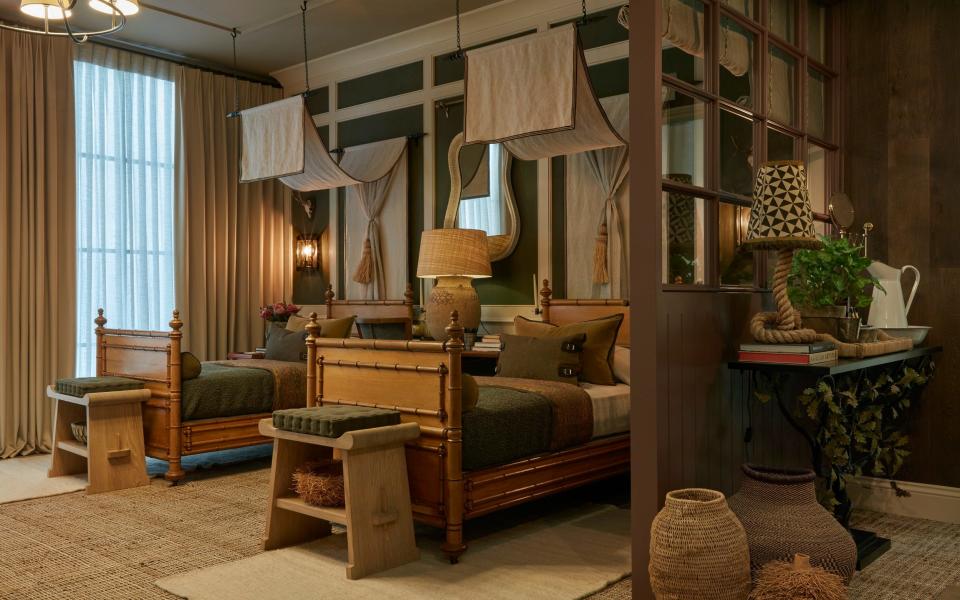
In Christian Bense’s bedroom, decorated using natural textiles by de Le Cuona, it was in the form of white-painted wooden mouldings that freshened up the forest-green wall paint and gave the room a smart, tailored look. Elsewhere in the room, a half-wall of glazed panelling acts as an internal window, separating the main part of the room from a small sitting area – a clever trick that would work well as a subtle room divider in a large, open-plan living space.
4. Ceilings are the new walls
In 18 rooms, there wasn’t a single plain white ceiling at the show – several were tented with luxurious fabrics; one was lined with bamboo; one was even thatched, a conceit that would be hard to carry out in the average home, but which showed how adding texture to the “fifth wall” of a room, rather than painting it brilliant white, helps to make it feel more comfortable and cosy.
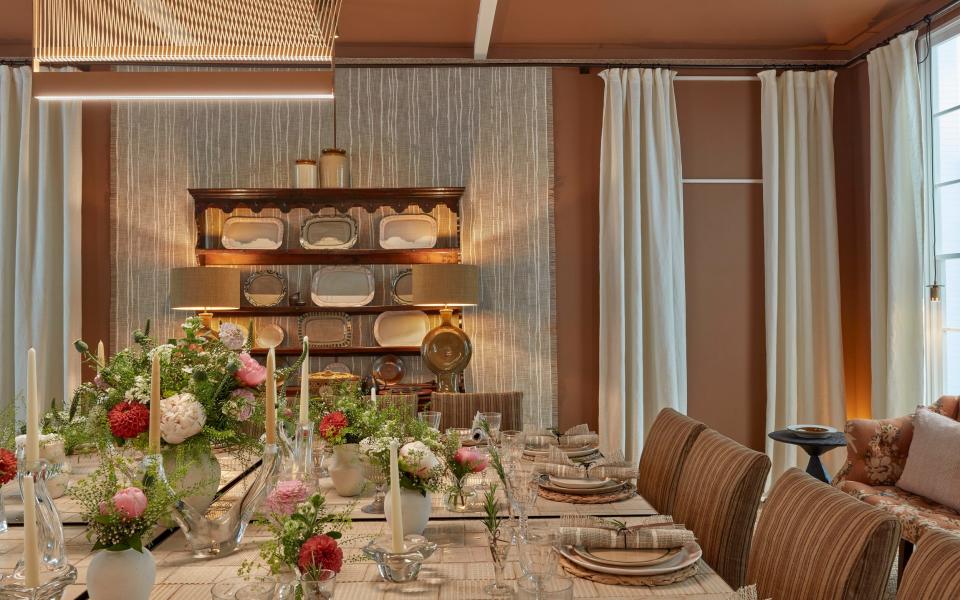
Among the most simple but effective ceiling treatments to copy is the one in the dining room by designers Martin Hulbert and Jay Grierson, where crisp white-painted beams contrast with the terracotta-brown paint used over the rest of the ceiling.
Similarly, the gold-toned wall covering on the ceiling of the kitchen designed by Henry Prideaux is a good trick for a dark room that needs brightening; its subtly reflective finish bouncing light around the space, not to mention adding a shot of upscale glamour.
5. Green is the colour du jour
The vibe is rather more serene in the bedroom by designer Natalia Miyar, which is decorated in 15 different shades of green, from the botanical patterned wall covering to the fabric draped over the four-poster bed and the paint used on the ceiling.
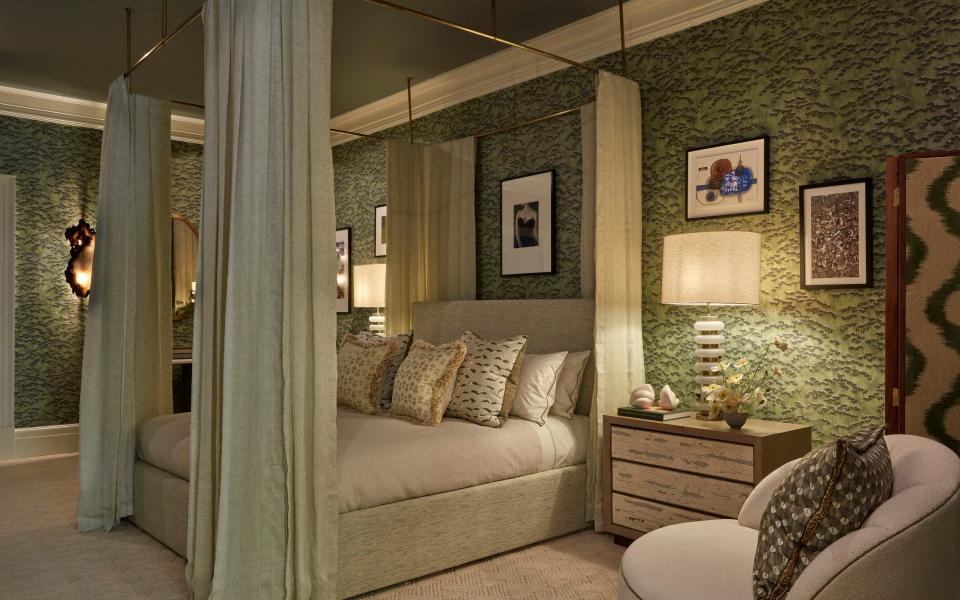
The calming scheme proves that the colour is still on trend – and that you don’t need to limit yourself to a single shade, or forego print, to achieve a restful look.
6. ... But so is red
For those who favour a warmer palette, the good news is that deep red – a colour we’ve spotted making a major comeback – is very much on the up. In Joy Moyler’s dining room, a bright red old-school telephone was the inspiration for a “gossip niche”, a velvet-lined nook with two oversized red velvet armchairs.

Elsewhere, a rust velvet sofa featured in Maddux Creative’s decadent “3am room”, and in the kitchen, the wine-red wooden trim used for the door architraves and cornicing makes a pleasing contrast with the pale pink cabinetry – a chic colour combination that is set to run and run.
7. A drinks area makes a room feel more relaxing
Many of the rooms featured a cocktail trolley or drinks tray, which instantly makes a room feel both more inviting and more fun – not to mention the fact that bottles and glassware look too good not to be on display.
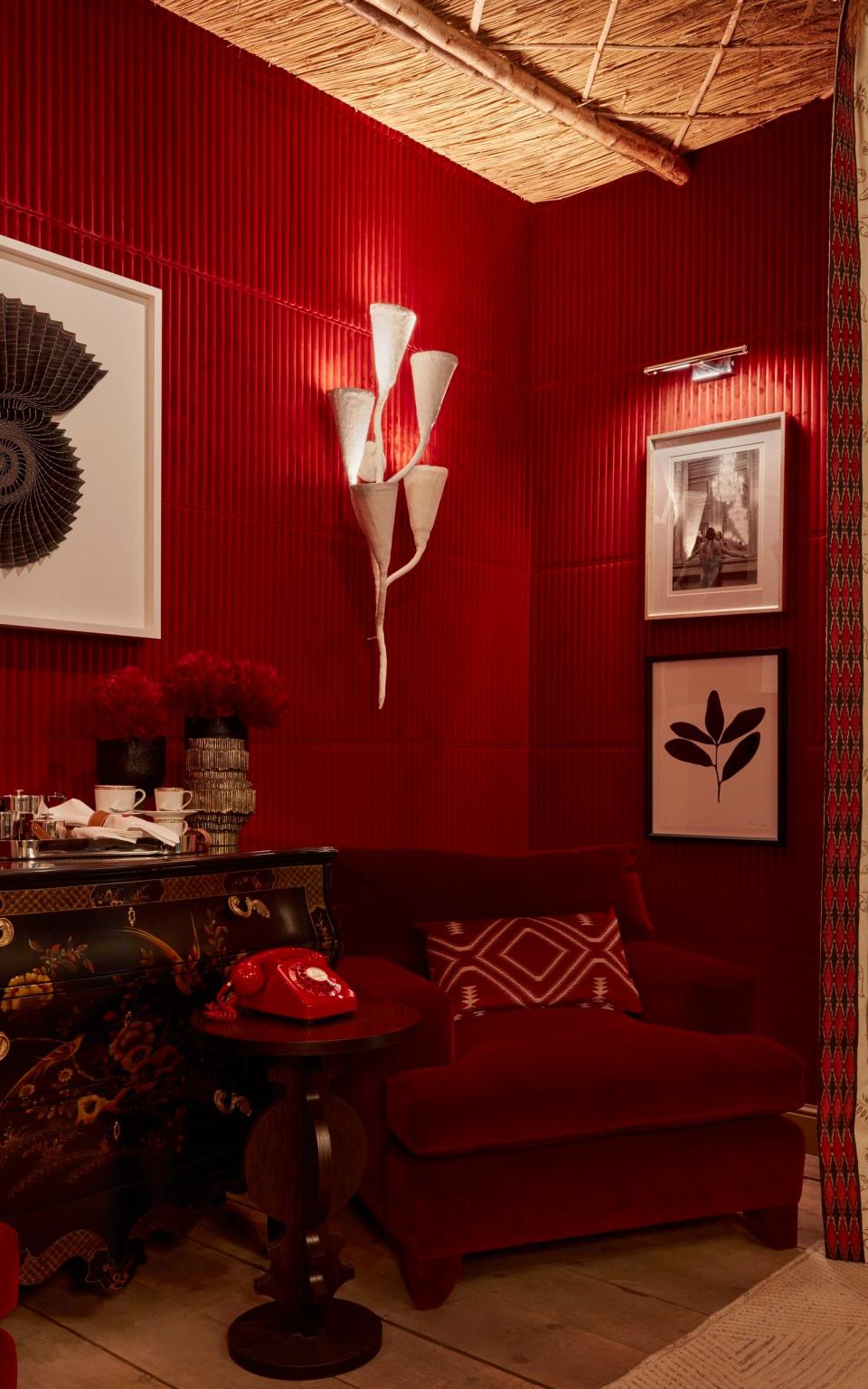
It’s not all about cocktails though: Joy Moyler’s dining room featured a sideboard topped with a tea tray loaded with a teapot, elegant cups and other accessories, which performed the same function without encouraging alcoholic consumption – and also made a decorative virtue of the kind of pretty china that’s normally shut away in a cupboard.
8. Mirrors aren’t just for walls
Mirror glass has been used inventively in a number of rooms – most memorably in the library by Tim Gosling, which is partly inspired by the Hall of Mirrors at Versailles.

Corner bookcases set in each corner of the room are topped with double mirrors at right angles, which reflect more light into the room than a wall-hung mirror would.
In the super-glamorous 1970s-style bathroom by designers Barlow & Barlow, the terrazzo-style floor tiles are made from fragments of mirror (possibly not the easiest to keep clean, but they look fabulous); while back in Nicky Haslam’s room, the custom-made fauteuil armchairs feature mirror panels set into the backs.
WOW!house runs at Design Centre Chelsea Harbour in London until Thursday 6 July; tickets cost £20 each (or £20 for two on Saturdays) from dcch.co.uk/wowhouse/tickets/


